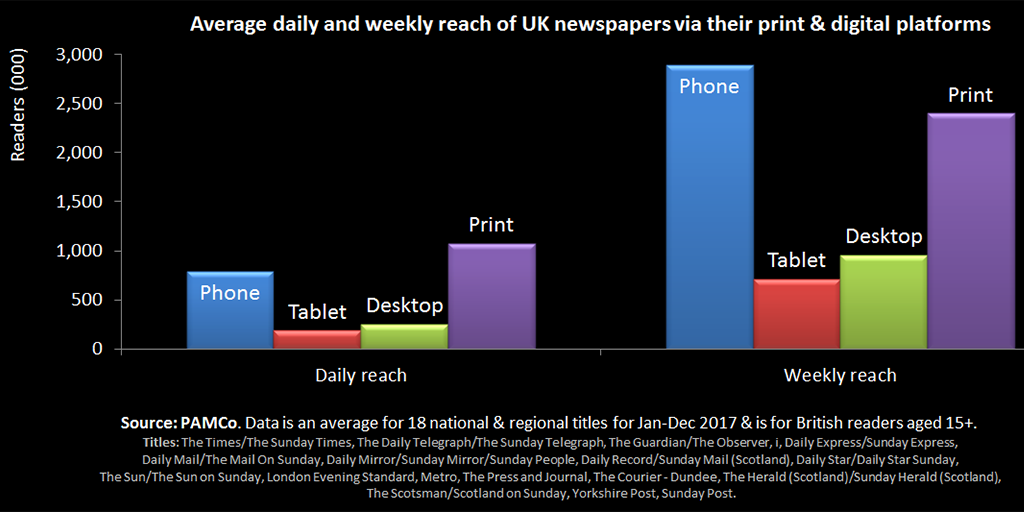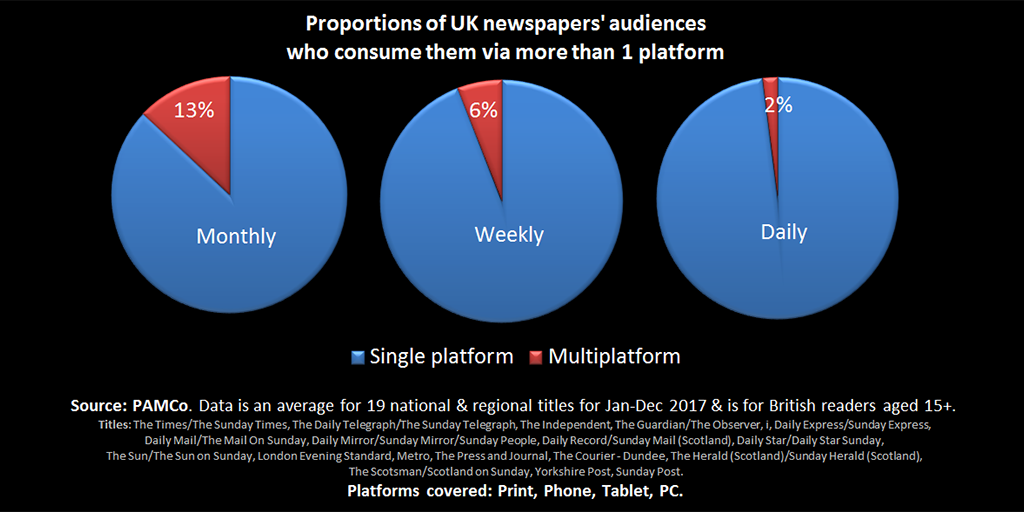Blog

by Neil Thurman
Print tops tablets for platform-devoted newspaper audiences
Newspaper and magazine audience measurement in Britain underwent a quiet revolution today with the release of the first full set of data from the Publishers Audience Measurement Company (PAMCo) which replaces the National Readership Survey (NRS). I’ve been crunching the data and here are my top three findings:
1. Day-to-day, print is newspapers’ most important single platform
On a daily basis, more than three-quarters of the UK's national and regional newspapers reach more Britons via their print editions than via phones or tablets or PCs.
Day-to-day, print is particularly important to the reach of The Times, the i, the Express, the Daily Star, the Evening Standard, the Metro and most of the regionals. Whereas for The Telegraph, The Guardian, the Mirror, and The Scotsman, more daily reach comes via phones than via their print editions.
Even on a weekly basis, most (slightly over half) of the UK's national and regional newspapers reach more Britons via their print editions than via phones or tablets or PCs.
2. Tablets aren't "saving newspapers"
Back in 2010, Rupert Murdoch said that the tablet "may well be the saving of the newspaper industry." The new PAMCo data shows tablets are the least important digital platform, behind PCs and way behind phones as devices through which Britons consume newspapers.

3. Newspapers' audiences remain in platform silos
The new PAMCo data shows newspapers' readers overwhelmingly consume newsbrands via a single platform. On a daily basis, an average of 98% of newspapers' readers are consuming any given title via a single platform: print, phone, desktop, or tablet. On a weekly basis this figure is still 94%. Even across an entire month, on average, 87% of newspapers’ readers are consuming any given title via a single platform.

How is PAMCo an improvement over the National Readership Survey?
The PAMCo data gives, for the first time, the net daily and weekly readership of newspapers with phone and tablet readers (as well as PC and print readers) included.
Previously, the NRS's daily and weekly net readership figures had only included print and PC readers—a significant omission given how many people access news via mobile devices.
The new PAMCo data also shows, for the first time, the relative importance of phones and tablets for newspaper consumption. Under the NRS, phones and tablets were grouped together in a single 'mobile' category.
PAMCo also says it delivers much more accurate estimates of how many readers consume newspapers via more than one platform, for example in print and via phones. This is because, unlike the NRS, PAMCo interviews 35,000 consumers face-to-face and tracks the digital consumption of 5,000 of those same consumers by installing a tracker app on all of their digital devices.
Visit the PAMCO website for more information.